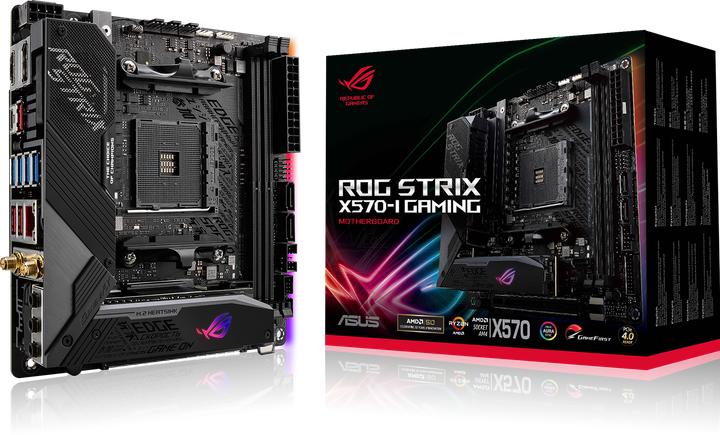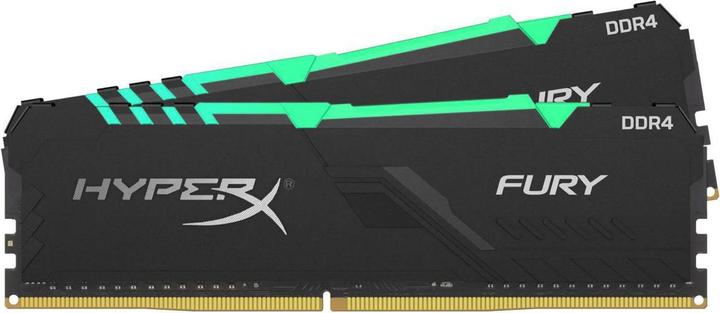
NZXT H1: a monster case at a (seemingly) dizzying price
Mini-ITX cases are becoming more and more popular due to their size. This is perfectly demonstrated by NZXT’s H1, into which the company has put a lot of research. The result is a well thought-out, but expensive case.
With Small Form Factors, manufacturers are challenged by new designs and certain limitations. Namely the lack of available space, airflow and thus higher temperatures. At NZXT, these efforts have resulted in one of the nicest cases I’ve ever seen, the H1. You can feel the manufacturing prowess in each and every component, even though it reaches its limits on temperatures and the pricing.

Expensive, but with accessories
The H1 costs just under 380 francs (420 euros). A proud price, primarily justified by high research and development costs. For NZXT, the H1 is a gamble: on the one hand, there are the high development costs. However, they are covered by the proud price of the case itself. Unlike mainstream, ATX cases, the company will sell few units of the H1. If the math works out, NZXT has made an important investment in its future.
However, the high price isn’t only due to research costs. NZXT gave the case a 140 mm AIO water cooler and a 650-watt SFX power supply for this price. The case is only available with these components. Cooling cannot be extended without surgical intervention.
The specs:
- Size: 187 × 187 × 305 millimetres.
- Material: hot dip galvanised steel and tempered glass.
- Colours: black and white.
- Weight: 6.53 kilograms.
- Front ports: one USB 3.2 Gen. 2 Type-C, USB 3.2 Gen. 1 Type-A, and jack port each.
- Drive bays: two 2.5-inch bays.
- Maximum dimensions for the graphics card: 305 × 128 or 265 × 145 millimetres as well as 2.5 slots needed.
- Maximum height for the RAM: 45 millimetres.
- Accessories: PCIe riser cable, 650 W SFX-L power supply and a 140-millimetre AIO water cooler with a 140-millimetre fan.
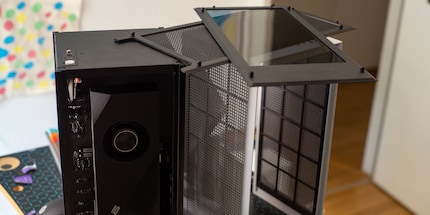
The H1 is surrounded by three panels. The front panel is made of glass, the back uses a mesh (lattice fabric) made of steel. This is joined by a large, U-shaped metal part with mesh on the sides and cutouts for power button and ports. Inside the u-shaped component are dust filters with magnets. These are missing from the mesh panel on the back. This isn’t tragic, since fresh air only enters from the sides. The back acts as an outlet. Its top ports are USB 3.2 Gen. 2 Type-C, USB 3.2 Gen. 1 Type-A and a jack.
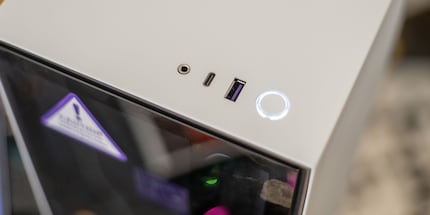
The side panels are latched and can be removed without screws. Not much can be seen through the glass panel. Only the debug LEDs on the main board and the front of the graphics card. It definitely doesn’t need a glass panel, I’d prefer another side of mesh. Especially since the H1 doesn’t have an exhaust fan and therefore emits hot air via the grille mesh.
Inside the housing: a pleasure to work with
When installing the test components, it became apparent that NZXT attaches importance to a good building experience. Everything is precisely labelled, you don’t really need the manual. Stickers with numbers on them tell you what to do in what order and where. You only need the screwdriver once, to loosen the bracket for the radiator, accessing to the main board.

The fully modular power supply and two 2.5-inch drive bays are hidden behind a removable panel. Drives slide in and are held in place by a mechanism, you don’t need screws. All cables come pre-installed, neatly lain and trimmed to the right length – almost: with the 24-pin main board cable, you’ll need a bit of force to attach it to the main board. Everything necessary is present in the cables so that the best possible hardware can be installed. These include two 6/8-pin PCIe power connectors for the GPU, a single 8-pin CPU connector, a 24-pin ATX connector, and a pair of SATA power connectors.
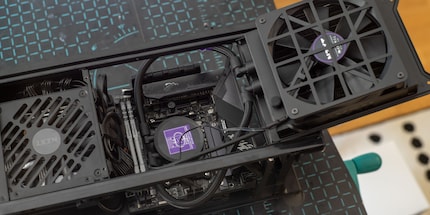
The AIO is compatible with all common sockets – AM4 or LGA 115x. Thanks to the 140-millimetre size, it should also be possible to install current top CPU models from Intel or AMD. To install the motherboard and other components, simply fold up the radiator holder of the AIO, mount your components and plug in the cables. After that, you just need to reattach the radiator bracket. Everything is precisely sized, the hoses of the AIO fit perfectly. The cables are a bit tight in places, for example when you mount the cables of the front connectors. However, this is due to the small form factor. A personal highlight for me: the plug for front connections, i.e. the power button, LEDs and Co., is actually only one plug and not several, as is usually the case. Your RAM mustn’t be taller than 45 millimetres; otherwise you won’t be able to close the radiator bracket.
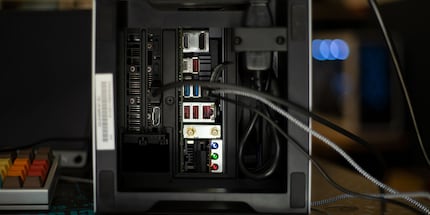
The main board’s connectors are located on the bottom of the case. NZXT relies on a dual-chamber design: seen from the front, the main board is on the left and the graphics card on the right. This allows the GPU and AIO fans to transport fresh air into the case from both sides. Ventilation is mainly via the rear. The H1 doesn’t have an exhaust fan. It’s therefore a matter of positive airflow. In our test scenario, this was different yet again.
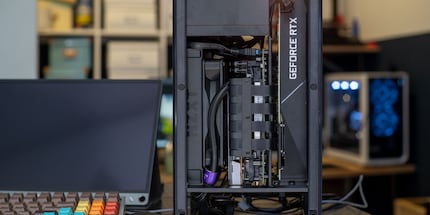
Our test setup and methods
Since the H1 comes with its own AIO and power supply, the test isn’t comparable to previously examined cases. Besides, the cases tested so far have been midi-towers anyway. Comparing such a large case with the H1 mini-ITX case doesn’t make much sense. Nevertheless, I used a method similar to the other case reviews..
The most important thing on this case is airflow. In other words: how efficiently does fresh air flow into the housing and out again? To test this, I subjected the following components installed in the case to stress tests HeavyLoad (for the CPU) and FurMark (for the GPU):
Regarding my choice of graphics card: the Sapphire Nitro+ Radeon RX 5700 XT, that I usually install is too long. I tried the ASUS GeForce RTX 2070S ROG Strix O8G Gaming. However, it’s too thick at 2.7 slots. It does fit, but the fans bump into the dust filters when spinning. Without filters, a 2.7 slot graphics card would also fit. Personally, however, I find dust filters useful and only remove them for testing purposes.
I ran the stress tests for 20 minutes, measuring temperatures for the CPU, GPU, motherboard and chipset using HWiNFO64. I’m currently testing at home. It’s not always equally warm at my place, especially when I do stress tests like this. Therefore, I aired out the room after each pass to always create about the same starting temperature, around 23° Celsius. I left fan control on default in the BIOS.
I ran the tests three times. Once in stock condition with both dust filters. After that, I removed the dust filter on the CPU and finally the one on the GPU.
After every two minutes, I noted the temperatures. Following each test, I shut down the system and let it cool down.
Good cooling performance with drawbacks
Without further ado, here are my results:
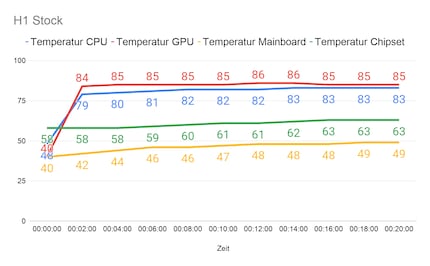
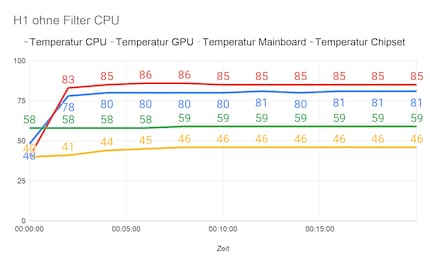
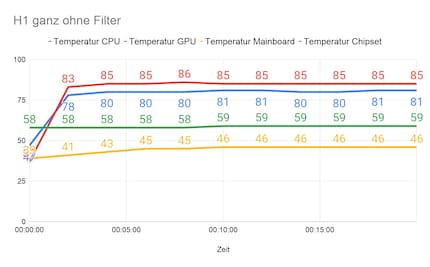
81° to 85° Celsius is a good result considering a stress test, even though it might sound like a lot. Components can be cooled sufficiently with the AIO and GPU fan. FurMark and HeavyLoad push a system to its limits. In reality, you rarely have such loads on components, and even then, never over 20 minutes. The sound level measured from 30 centimetres away is 55 decibels. This is relatively high, but mainly due to the graphics card. The 2070 Super Turbo is noisy because it has a radial fan installed. I’ve already noted this in my review of the card.
Another negative effect of the graphics card with its radial fan in the H1: the fan exhausts hot air via the back of the graphics card. Thus, it’s not stuck in the housing. This is advantageous in most small cases, but not in the H1. As the back of the graphics card is on the bottom of the case, the radial fan blows hot air out from the bottom of the case. Hot air rises, however, and on the H1 it can only get out at the bottom through a narrow gap by the cables on the rear. Hot air accumulates there, getting very hot at 74° Celsius. You should therefore not install a graphics card with a radial fan in the H1, since heat isn’t dissipated well.
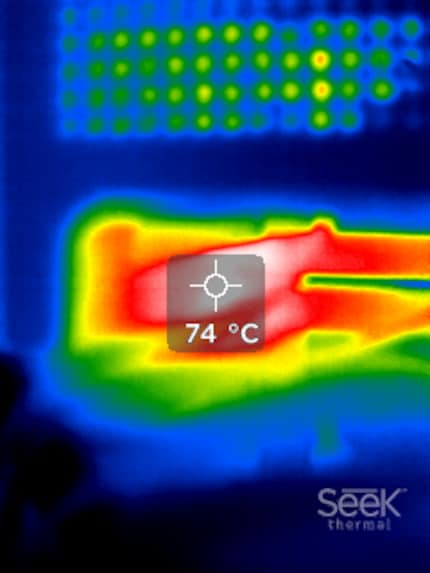
The values without a dust filter are astonishing: the CPU is two degrees cooler without the dust filter. It’s three for the main board and four for the chipset. At first glance, removing dust filters doesn’t affect the GPU. However, the radial fan without a filter spins up to two per cent less quickly, which results in one decibel less noise emission.
When idling, the temperatures are in the range of a larger case and thus very good. I measured only 37 decibels. We humans perceive this as pleasantly quiet.
A super (expensive) case
I like the H1 very much. From its look, to the building experience, to the temperatures – limited by the graphics card with its radial fan. The only thing I’d do is switch the glass panel for a second mesh panel.
There are two points of critique: the case’s high price and its lack of expansion options for cooling. The price is justified by the included accessories: a comparable AIO water cooler and an SFX power supply cost around 250 francs together. Thus, the case only costs around 130 francs.
The included accessories bring me to my second point: you can’t choose whether you want them or not, you have to buy it as is. You can’t expand anything anyway. There’s no room for an exhaust fan. With one included, temperatures could very likely be optimised.
All the same, if you’re looking for a mini-ITX case in which you can easily install current top components, I can only recommend the H1.
Competition
Currently, the waiting time for an H1 is lengthy. If you don’t want to wait that long, you could win one. Just click on «Participate» and maybe you too will soon be the proud owner of one of these impressive black cases. The competition will run until June 11, 2020.
NZXT H1
Do you want to win an H1?
The competition has ended.
From big data to big brother, Cyborgs to Sci-Fi. All aspects of technology and society fascinate me.
